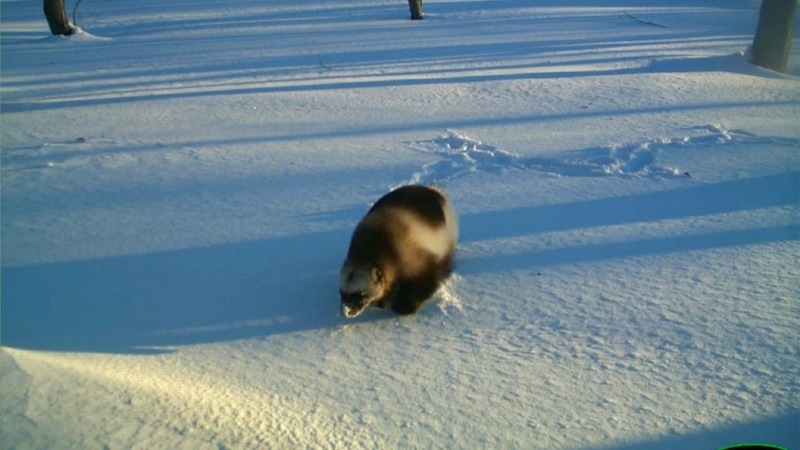A camera trap installed on the shore of the Ozernaya River flowing from Kuril Lake in the South Kamchatka Federal Reserve caught a wolverine in the lens, the press service of the Kronotsky Reserve reports.

“The beast came hoping to prey on dead salmon, which can still be found in the water under the shore after late spawning,” explained Evgeny Denges, senior state inspector of the Kronotsky State Nature Reserve.
The largest sockeye salmon herd in Asia is reproducing in the Kuril Lake basin. The spawning period of the valuable Pacific salmon species is extremely long here – from June-July to March. They can spawn even under the ice. After giving birth to a new generation, the salmon die. Spawned fish are easy prey for bears, which in this area do not rush to their dens while there is food, and other fish–eating animals.
“Camera traps help us to obtain interesting data about animals living in specially protected natural areas without causing them concern. For example, the wolverine is a fairly secretive and cautious predator. And despite the fact that these inquisitive animals periodically visit protected cordons, observing them in key habitats during recreation, hunting, and breeding is not an easy task,” said Vsevolod Yakovlev, Acting Director of the Kronotsky State Nature Reserve.
The Kamchatka demon or the northern hyena, as the wolverine is also called, is a cunning and dangerous beast. In a sense, this largest terrestrial representative of the marten family is a tundra nurse. Unlike a lynx, it eats dead animals without any squeamishness. Due to its incredible endurance, it can chase a wounded or weakened victim through the snow for a long time, as well as accompany a pack of wolves to finish the remains of their meal. At the same time, the beast is very beautiful.